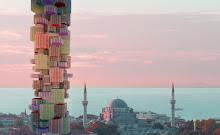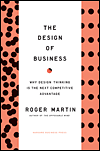I would like to introduce you to my new blog - Borderless Culture Life & Style!!!



While we adore good design, good food - generally the good life, we are also concerned about the state of the world; the environment, social and economic inequities. We value intellectual rigor as much as a side splitting laugh and silly banter. And while we weren't always rich (just yet), we want our lives to be rich with experiences and knowledge.
So this new blog attempts to focus on the real lifestyle of the global nomad. It's more lighthearted and playful in tone and hopefully will have a lot of heart. I plan to cover my favorite topics like food, travel, living and moving globally, books, design, people, love, entertainment and just every day life. Currently, it has three new posts - "Why a new blog?" and "The Happiest Place on Earth - and it ain't Disneyland," and "The Silk Road 2023."
nomad. It's more lighthearted and playful in tone and hopefully will have a lot of heart. I plan to cover my favorite topics like food, travel, living and moving globally, books, design, people, love, entertainment and just every day life. Currently, it has three new posts - "Why a new blog?" and "The Happiest Place on Earth - and it ain't Disneyland," and "The Silk Road 2023."
Check it out but keep in mind that I am still in the development stages. And since I have set up a tall order for myself, I would really appreciate your ideas and comments.
Borderless Culture Life & Style
I hope you will enjoy it....
7.30.2008
Birthing a New Blog
7.23.2008
Can Skidmore, Owings and Merrill Rise above the Generic in Mumbai?
Skidmore, Owings and Merrill (SOM), the architects who seem to have perfected the generic glass tower have been awarded a project that is so large and requires such depths of cultural and social sensitivity, diplomacy and skill that I can't help but wonder if their clients knew what they were doing when they hired SOM. Unitech, perhaps India's largest real estate developer commissioned SOM to redesign 124 acres of the Santa Cruz district of Mumbai, which essentially consists of 124 acres of slums housing and 125,000 slum dwellers.
 Slums of Mumbai - Image taken by Simon Bruno
Slums of Mumbai - Image taken by Simon BrunoDesigning an urban environment that equally and adequately addresses the rich and vibrant Indian culture and the unique social structure of slum dwellers is already a tremendous challenge. However, the Santa Cruz redevelopment project is made even tougher because the new apartments for the slum dwellers will be immediately adjacent to high end commercial space - which brings me back to SOM.
From the 1950's to the early 1980's, SOM was undoubtedly a leader in architectural design with buildings like the Lever House in New York (1952), Nation Commercial Bank (1983) and King Abdul Aziz International Airport - Hajj Terminal (1981) in Jeddah and the Sears Tower in Chicago (1974). They popularized the the curtain-wall skyscraper. Their designs were thoughtful and inventive - but no more.
In recent years, their architecture and urban planning have become generic and staid - often regurgitating similar designs. While they continue to push the realm of engineering feats, as with the Burj Dubai, currently the tallest building in the world, local culture and environmental concerns are afterthoughts
 now. Aside from the fact that any building with a glass facade over 164 stories tall has no place in a desert climate, the design of the Burj Dubai is also recycled from a previous design. Likening the plan of the building to some local desert flower after the design was completed was a pathetic attempt to localize the building. The Hong Kong Convention Hall or the the Jin Mao Tower in Shanghai were both supposed to become cultural icons for their cities, however, these buildings have been un-relatable to their local population.
now. Aside from the fact that any building with a glass facade over 164 stories tall has no place in a desert climate, the design of the Burj Dubai is also recycled from a previous design. Likening the plan of the building to some local desert flower after the design was completed was a pathetic attempt to localize the building. The Hong Kong Convention Hall or the the Jin Mao Tower in Shanghai were both supposed to become cultural icons for their cities, however, these buildings have been un-relatable to their local population.Their recent efforts at urban development have been no better either. An entire quadrant of prized historic hutongs, the heart of Beijing's residential neighborhoods were flattened to make room for SOM's design of Finance Street. While SOM thought they were modernizing Beijing, Liang Wei, deputy director of Beijing's Tsinghua Urban Planning and Design Institute viewed it as a "disastrous development," only appropriate perhaps in an empty lot in Nevada.
Now SOM claims that this new design for the slums of Santa Cruz will be reminiscent of Roppongi Hills (Tokyo), Canary Wharf (London) and Battery Park (New York). The choice of these references however, is also unfortunate. Not only did Canary Wharf and Battery Park suffer from minimal success, they also represent what people fear most about globalization - the mindless transplant of the same generic glass towers from city to city devoid of all locality, culture and identity.
The slum dwellers of Santa Cruz will be formidable critics for SOM. For the 125,000 Indian residents, who struggle throughout their lives daily under the harsh and unsafe conditions, I hope SOM succeeds in creating a thoughtful and locally sensitive environment. Who knows, miracles can happen.
*Simon Bruno images were taken from www.simon.bruno.name/india/Day4/index.htm
**The last two pictures are buildings designed by SOM. The first image is the Sears Towers and the second image is the King Abdul Aziz International Airport - Hajj Terminal.
7.19.2008
The Delicate Dance of Cultural Exchange
So finally after years of planning, the first stone for the Louvre's Islamic art wing was laid by French president Nicolas Sarkozy last week. Ironically, this grand gesture occurred a few days after the French courts denied a Moroccan woman's appeal for citizenship because of the radical interpretation of Islam she practices and because she insists on wearing a burqa. A burqa, she claims she only felt compelled to wear once in France, pressured by those in her religious community.
 This addition to the Louvre will form the largest exhibition space in Europe built purposely to display Islamic Art. Former French president Jacques Chirac saw this project as an effort to redirect attention away from the notion of the clash of civilizations heightened by America's invasion Iraq. Sarkozy announced that this was a symbol of France's friendship with the Arab world.
This addition to the Louvre will form the largest exhibition space in Europe built purposely to display Islamic Art. Former French president Jacques Chirac saw this project as an effort to redirect attention away from the notion of the clash of civilizations heightened by America's invasion Iraq. Sarkozy announced that this was a symbol of France's friendship with the Arab world. Given that France has the largest population of Muslims in Europe (approximately 6 million), this is a significant gesture to reduce the focus on extremists and promote a dialog between the heritage of Islam and the French secular republic. Although, I am surprised that it has taken this long for France to have a museum to display Islamic art given that France has been a colonial power in so many countries throughout North Africa and the Middle East. The department of Islamic Art at the Louvre was not even created until 2003. It seems a tremendous shame that over 10,000 pieces of art, one of the most sizable collections of Islamic art in the world sat unseen in the basement of the museum. However on the flip-side, it is also important to note that since the Louvre is the most visited museum in the world, a new wing focusing purely on Islamic art is monumental and will be viewed once completed by millions of people. For many around the world, this will be their first exposure to this rich artistic heritage. The French cultural minister, Renaud Donnedieu de Vabres acknowledged the significance in 2005. The Louvre, he said was no longer just a museum but "now an essential instrument for the dialogue of cultures and the preservation of their diversities."
 The controversy surrounding the Louvre however, does not end with the headscarf, many are also perturbed that the Saudi prince Al-Waleed bin Talal has donated 17 million euros towards the total cost of 86 million euros to help fund the construction of this museum, when Saudi's hardline interpretation of Islam is viewed as practicing sexual inequality and artistic and cultural destruction - but Sophie Makariou, head curator of the Islamic art department is un-fazed. For her and many others, when trying to promote cultural exchange, awareness and dialogue, everything is not black and white.
The controversy surrounding the Louvre however, does not end with the headscarf, many are also perturbed that the Saudi prince Al-Waleed bin Talal has donated 17 million euros towards the total cost of 86 million euros to help fund the construction of this museum, when Saudi's hardline interpretation of Islam is viewed as practicing sexual inequality and artistic and cultural destruction - but Sophie Makariou, head curator of the Islamic art department is un-fazed. For her and many others, when trying to promote cultural exchange, awareness and dialogue, everything is not black and white.This infusion of culture however, is not only going in one direction. In 2006, the Louvre brought 136 works to Saudi Arabia and 400,000 visitors came to see the exhibition in 2 months. And in 2012, the Louvre will be opening their first museum outside of France. Abu Dhabi is the first country to loan hundreds of works from this famed museum transplanting the Louvre global brand from the heart of France to the sands of the Middle East. This extravagant effort will offer many societies from around the Middle East and Asia, that might previously have little or no exposure to Western art an opportunity to see these pieces first hand.
Like those Mastercard advertisements that are frequently seen on television and magazines -
Cost of the new Islamic Art Wing at the Louvre - 86 million euros
Cost of transplanting the Louvre museum and brand to Abu Dhabi - US$1 billion
Increased cross-cultural understanding and appreciation - Priceless.
Labels:
architecture n CITIES,
art n Fiction,
culture identity,
Dubai and the Gulf,
globalization,
politics
![]()
Posted by Deeba Haider
7.03.2008
Holy Cow Obama! What are you thinking?
While I was squirmy, I still let it slide when Obama announced at the American Israel Public Affairs Committee (Aipac) meeting that Jerusalem should be the undivided capital of Israel. It really is not his decision to make, especially since the rest of the world still views the annexation of Arab East Jerusalem as illegal. He later rescinded the statement.
Then there was the incident at a rally in Detroit where two Muslim women wearing head scarves were asked to move out of the camera shot by Obama campaign volunteers. This story was then followed by another when the New York Times reported how Minnesota representative Keith Ellison felt slighted when eager to support the Obama campaign, he was told to cancel a trip to a mosque in Iowa because it would not coincide with their tightly wrapped message. While Obama has visited churches and synagogues, he has avoided visiting any mosques. Although I was disappointed because this goes against his message of unity, I could still appreciate how Obama has to tread carefully given the tremendous ignorance out there regarding the religion of Islam. And there are groups having a field day spreading vicious rumors all over the internet about his past. But it does make me question what happened to the man who took a stand and took a public HIV test in Kenya to promote AIDS education in 2006 and gave the courageous and poignant speech on race in America months ago.
Unfortunately over the past couple weeks, the shifts in his message have continued. First there was his new found support of the Supreme Court's overturn of District of Columbia's 32 year local gun ban. And now, more frighteningly is Obama's recent decision to support legislation granting legal immunity to telecom companies that have partaken in the Bush administration's program of wiretapping without warrants. During the Democratic primaries that ended not so long ago, Obama stated that he would fight such legislation. Now his campaign is trying to put a positive spin on this dramatic shift.
From what I have read from the political pundits, any candidate who wishes to get elected to the White House needs to move to the political center - which I can appreciate. However, in trying to become the new face of politics and everyone's candidate - left, right, blue, red, educated, blue collar, wealthy, poor, evangelical, atheist, urban, suburban, rural... - Obama runs the very real risk of diluting his message and alienating his staunchest supporters who formed his base from the very beginning.
7.02.2008
The Dichotomy in Rwanda's Economic Transformation
But how is this possible - when 52% of the population still lives below the poverty line; only 5% of the population has steady access to electricity; life expectancy is hovering around 46 years of age; 175,000 women and girls are infected with HIV from rapes during the genocide; 400,000 women have been widowed; 100,000 men are imprisoned for their role in the genocide and families have been decimated? (In just a 100 days in 1994 1 in 10 Rwandans were murdered). Well, meet Rwandan President Paul Kagame. He is leading with a determination and vision unlike any African leader. However, armed with a strong conviction and singular vision of achieving these goals, he has implemented some rather contradictory laws and developments. President Kagame has made honest governance and security critical; has promoted education and healthcare; and aggressively advanced the rights of women in public and private life. He has also outlawed all opposition.
Welcome to the unusual economic and social miracle that has become Rwanda.
Up until 1994, the majority of women in Rwanda did not work outside the home, did not own property and were instead viewed as property. In May 2003, Rwanda voted in a new constitution, allowing women to own property and reserved at least 30% of the seats in Parliament for women. As a result, in the first national election since the genocide, 48% of the seats of Parliament were won by women (39 out of 80). 36% of Kagame's cabinet positions are also held by women. Rwanda now leads the world in representation by women in a national legislature.
Most Rwandan women, left alone to pick up the pieces and support not only their own remaining family members but thousands of orphaned children after the fighting died down, have also managed to start businesses with an infrastructure not created to support them. Today 41% of businesses in Rwanda are owned by women. For the first time in Rwanda's history, women are taking charge and developing new skills to move forward.
In addition to this dramatic political and socio-economic advancement, Kagame has transformed Rwanda into the safest country in Africa. His administration has also waged a comprehensive campaign against bribery and influence-peddling in government.
Since 2004, Rwanda's economy has grown at an average rate of 6%. Economists, diplomats, development experts are all full of praise for what Kagame has already accomplished and still plans to accomplish. Archbishop Desmond Tutu has called Rwanda "a miracle unfolding before our very eyes."
But there is also a more ominous side to this positive development. Kagame's last election that he supposedly won with 95% of the vote is rather suspect. He has allowed no real opposition foster. Judicial independence has been compromised. Free speech and freedom of press does not exist. And while Kagame advocates one Rwanda, he purposefully squashes lingering sentiments of sectarian politics for his own benefit - cementing his rule.
It is a known fact, although often overlooked, that without sound economic development it is extremely tough to heal a society violently ripped apart by civil war, or worse still, genocide. Old wounds cannot start to heal if people cannot feed their families or provide them shelter and have no hope for the future. It is also absolutely critical that women hold positions of power and leadership, if they are to over turn the mindset that allowed the mass raping of women and children. Perhaps without the dictatorial methods of President Paul Kagame, Rwanda would not have progressed as far and be hailed as the hope of what is possible in Africa. After such unthinkable horrors, and utter lawlessness during genocide, perhaps a rigid, even authoritarian framework is necessary to rebuild security and a new socio-economic structure. Where must the line be drawn between development and progress and free speech? And given that women's rights are human rights then Kagame can both be praised and demonized for his approach towards the rights and freedoms of his people.































